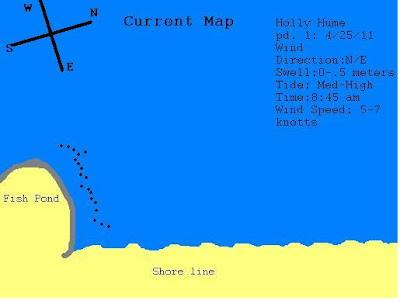(Allie and Lucas measuring carefully with the Rise/Run tools
as we follow the transect over the hill)
(Holly and Lucas getting help from Ms. S at the beginning of our transect)
Procedure:
1) Gather your materials: Transect tape, GPS, compass, Rise and Run tool, data sheet, and pencil or pen. 2) Head out to the beach!
3) Once you find a good dune er’ two, pick one and find the latitude and longitude coordinates of that dune using your remarkable GPS tool. Record these on your data sheet as “Point A”4) Now lay your transect tape out stretching from Point A to the shoreline, making sure it is perpendicular to the waterline
5) Then hold the compass at Point A to find out the degree/direction of the transect line laid out. Record this reading!
6) Place the Run tool on the ground and Point A aligning with the transect tape (pointing downwards) and use the level to make it level (Ha!)
7) Now place the Rise tool at the end of the Run tool and use the level to make sure it’s even. This is Point B
8) Look to see where the Run tool intersects with the Rise tool and record is at the Rise between points A and B. This number (if the dune tilts up) should be a negative number.
9) Note any distinctive features that stick out between the two points and on the dune
10) Now move the foot of the Run tool to the foot of the Rise tool (making sure it’s at the same point) and remove the Rise tool from that spot. Make sure the Run tool remains level and perpendicular to the water line
11) Then take the Rise tool and place it so it’s touching the end of the Run tool, like #7, and make it level again
12) Repeat steps 10 and 11 until you get to the “foot of the beach” in the water, past the shoreline.







